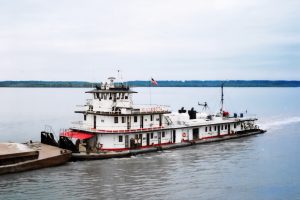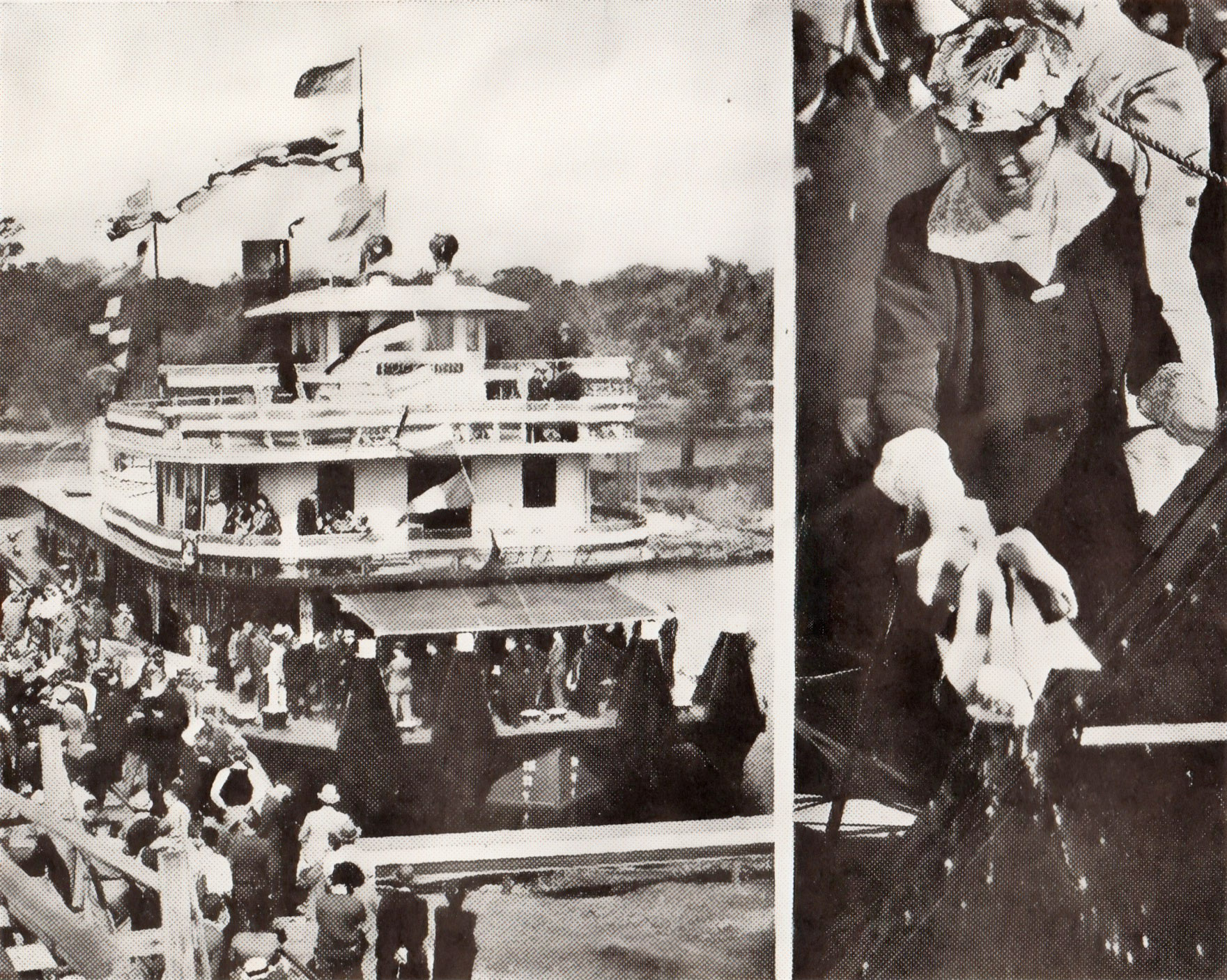While Dravo had its innovative new diesel prop boats—such as the Wm. Penn and Ductillite—on the drawing boards, the Inland Waterways Corporation (IWC) was engaged in having three prop towboats constructed that would be powered by steam.
The IWC was the government-chartered barge line formed following World War I in an effort to revitalize river transportation. Commonly known as the Federal Barge Line, the IWC had been heavily involved in experimenting with diesel power since the construction of the big Herbert Hoover in 1931 (See The Waterways Journal, November 25, 2021), so this return to steam was somewhat surprising.
The reason was based in practicality. IWC planned to replace the four self-propelled barges it had operated on the Black Warrior-Tombigbee Waterway, between Mobile and New Orleans, and in express service between St. Louis and New Orleans. Built in 1920, these barges were named Birmingham, Gulfport, Mobile and Tuscaloosa. The Nordberg steam engines on these barges were judged to be in excellent condition, so the decision was made to dismantle the barges and use the machinery in the three new boats, as well as on a hawser tug to be built by Dubuque Boat & Boiler.
The towboats were built to the same general design as the twin prop diesel Franklin D. Roosevelt and Tom Sawyer, built for the IWC in 1933 by Midland Barge Company at Midland, Pa. One of the steamers, named Helena (WJ, February 19, 2024) was built by the Midland firm, and one named Kansas City was turned out by Marietta Manufacturing Company, Point Pleasant, W.Va. These boats both entered service in 1938. The third was built by Canulette Shipbuilding Company, Slidell, La. This boat was launched in June 1938, but it was not completed and placed into service until March 1939.
The delay in completion was due to the barge Tuscaloosa having to stay in service between Mobile and New Orleans until the tug built by Dubuque, named Mobile (WJ, February 6, 2023), entered service to replace it. Once that happened, according to a story in the January 14, 1939, issue of The Waterways Journal, the Tuscaloosa was taken to the New Orleans area, where it was dismantled and converted into a regular barge. The machinery went into the new Huck Finn.
The March 25, 1939, issue of the WJ was full of news about the completion and christening of the Huck Finn at Slidell on March 14, 1939. Many guests attended the ceremony, and the Slidell High School band provided musical entertainment. Capt. Donald T. Wright, owner and publisher of The Waterways Journal, was in attendance and wrote of the large event that he described as “a real party” on the banks of Bayou Bonfouca. Major General (Ret.) Thomas Q. Ashburn, head of the IWC, made remarks, and the boat was christened by Mrs. Morris Sheppard, wife of Senator Sheppard of Texas.
The Huck Finn had a steel hull of 160 by 40 feet. The main cabin was steel, with the upper cabin and pilothouse of wood construction. The two 500 hp. Nordberg engines were triple expansion, condensing, 10 ½’s, 17’s, 27’s with 18-inch stroke that turned the 6-foot, 5-inch propellers at 225 rpm. Steam was supplied by a Foster-Wheeler steam generator fired by oil. Nordberg ran ads in the WJ touting the fact that its 20-year-old engines had been considered in perfect condition to be placed in the new boats. The Finn would prove to be the last steam-prop towboat built until the big DPC boats of World War II.
The IWC operated the Huck Finn under steam until 1947, when it underwent a major rebuilding at Avondale Marine Ways in New Orleans. The steam machinery was removed, and GM diesels of 1,800 hp. were placed. The project included the installation of kort nozzles that increased the horsepower equivalent to more than 2,000 hp. An automatic pilot, the first of its kind on inland rivers, was also placed at this time.

The floating assets of the IWC were sold to Herman Pott/St. Louis Ship in 1953, and the Federal Barge Line nickname was
legitimized as the actual name of the company. The Huck Finn was again repowered in 1958 with a pair of GM 12-278A engines of 2,400 hp. and renamed Minnesota. In 1964, it was sold to Jet Towing Co. Inc., Cassville, Wis. It was transferred in 1968 to Wisconsin Barge Line Inc., also of Cassville.
In February 1979, the Minnesota was sold to Godfrey Transportation Company, Godfrey, Ill. Through the years, some subtle changes had been made to the exterior appearance of the boat, with a squared off pilothouse front and the addition of two small stacks to replace the original single large stack from the steam days. According to an article in the July 19, 1980, WJ by Capt. Jeff Yates, the Minnesota caught fire on July 15, 1980, at mile 354 on the Lower Mississippi River. The fire was extinguished by the Coast Guard tender Chena, and afterward, as the boat was being towed to Baton Rouge, it sank at Mile 244.6 with only the pilothouse visible, effectively ending the career of the former steamer.



